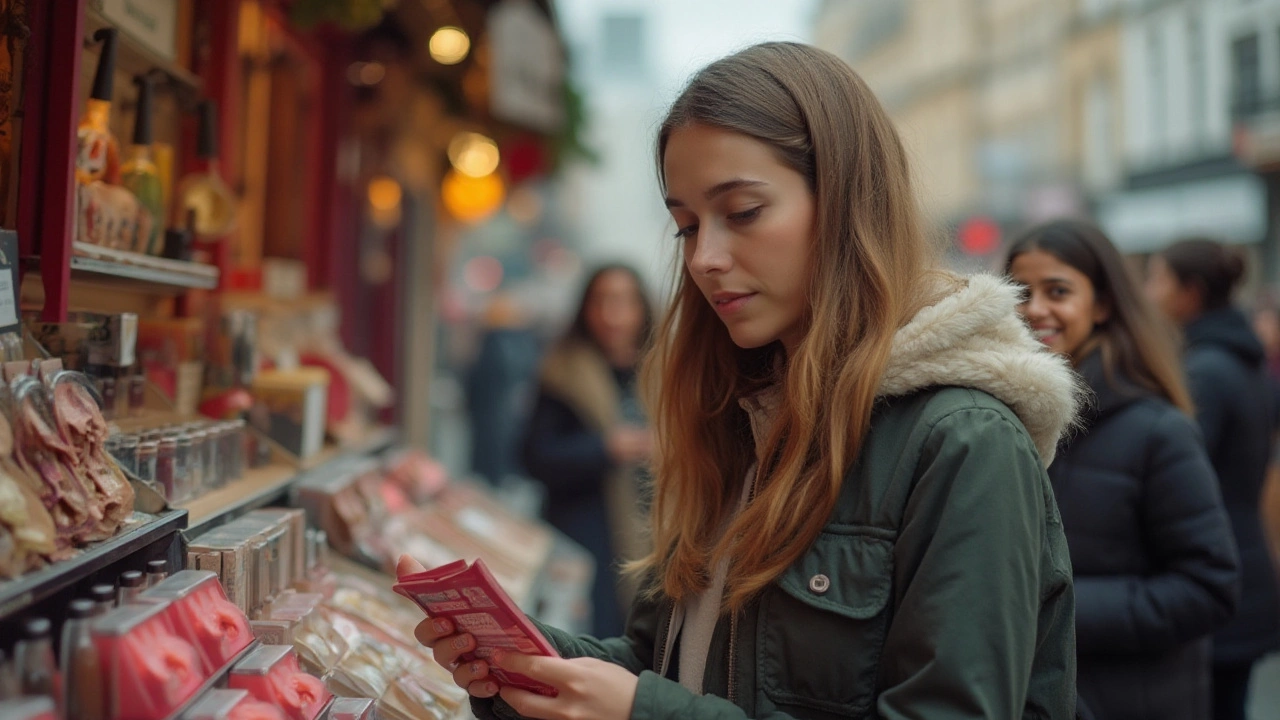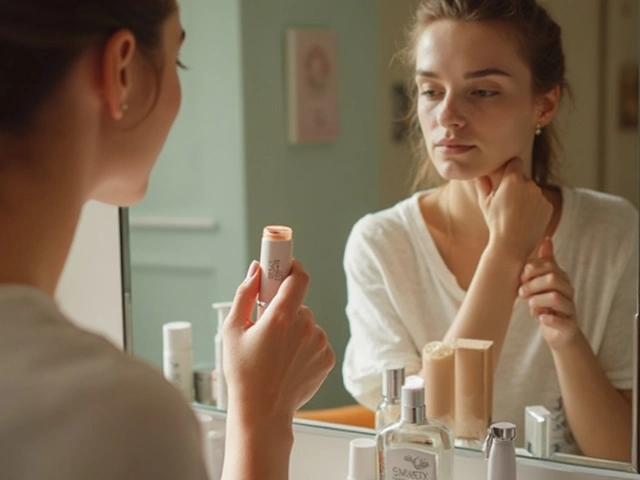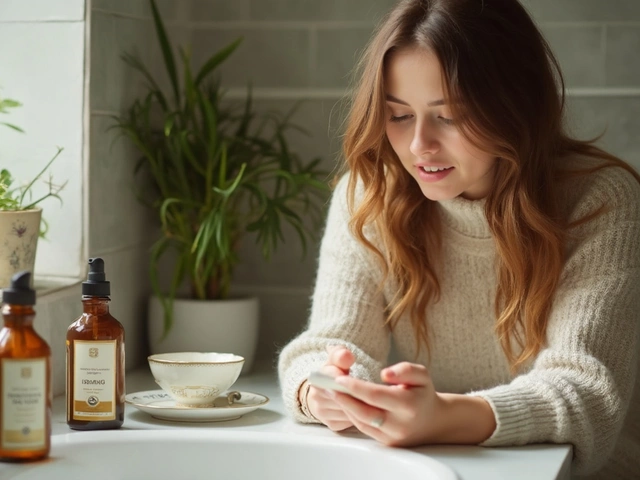In recent years, cruelty-free makeup has gained popularity among consumers who are both beauty enthusiasts and ethically minded individuals. But what exactly does it mean when a product is labeled as cruelty-free?
The journey to understanding cruelty-free makeup begins with recognizing its significance in promoting ethical beauty standards. Each purchase tells a story that reflects our values and contributes to the broader movement of compassionate consumerism.
By understanding and advocating for products that avoid animal testing, we align our choices with a kinder, more sustainable world. As we explore cruelty-free makeup, we'll uncover how these products not only impact animal welfare but also redefine our understanding of what beauty truly means.
- Definition and History of Cruelty-Free Makeup
- The Ethical Importance of Cruelty-Free Products
- Identifying Certified Cruelty-Free Makeup
- Popular Cruelty-Free Brands to Explore
- Making the Switch: Tips for a Cruelty-Free Lifestyle
Definition and History of Cruelty-Free Makeup
The term cruelty-free in the beauty industry defines products that have not been tested on animals at any stage of their development. This concept of avoiding animal cruelty in beauty has roots that stretch back to the animal rights movement of the late 20th century. The heightened awareness of animal welfare issues gradually began to influence consumer choices, drawing attention to the harsh realities behind product testing in laboratories. In many of these laboratories, animals were subjected to tests that often resulted in pain, suffering, and eventually death. The advocacy for ethical cosmetics gained momentum in the 1980s when organizations like PETA (People for the Ethical Treatment of Animals) started campaigns to raise awareness and demand transparency from brands. Their efforts shone a spotlight on the need for beauty products crafted without animal testing.
One significant milestone in the cruelty-free movement was the establishment of the Leaping Bunny Program in 1996. This collaborative effort between animal rights groups in eight countries set out stringent criteria for products to bear the coveted Leaping Bunny logo, a symbol that assures consumers of a brand's commitment to abstain from animal testing. Today, this internationally recognized certification symbolizes trust and reliability for millions of consumers worldwide. Through these years, consumer demand for ethical, cruelty-free beauty has only grown. By 2023, more than 40 countries, including all member states of the European Union, had enacted bans on animal testing for cosmetics.
The historical context of cruelty-free beauty underscores the notion of conscious consumerism, where shoppers actively seek products aligning with their beliefs about animal rights and welfare. The growing popularity of cruelty-free makeup is a testament to the impact of individual choices on large-scale change in the industry. As the concept evolved, many brands saw the ethical and commercial opportunity in developing cruelty-free product lines. These pioneers have helped shape a market that reverberates with compassion and innovation. An increasing number of brands, both indie and mainstream, are choosing ethical testing methodologies, resulting in a wider availability of cruelty-free options today than ever before. A report noted that the global cruelty-free cosmetics market is expected to reach $10 billion by 2030, a growth propelled by the ethically motivated consumer base.
The history of cruelty-free makeup thus marks an important chapter in our society’s shift towards ethical consumer practices. Today, when people purchase cruelty-free beauty products, they are not just opting for a look but are making a choice that echoes their values. This gradual transition signifies a future where compassion is at the core of beauty, setting a shining example for other industries to follow. By embracing ethical cosmetics, consumers are part of a global movement that respects life while nurturing beauty in its myriad forms.
The Ethical Importance of Cruelty-Free Products
The rise of cruelty-free makeup reflects a deeper societal shift towards more humane and ethical consumer habits. At its core, the cruelty-free movement underscores a commitment to protect animals from the harsh realities of cosmetic testing—a practice long shrouded in controversy. With an increasing number of scientific advancements providing viable alternatives, the question arises as to why animal testing persists. By opting for cruelty-free products, consumers are not only choosing beauty but making a stand against outdated and inhumane practices that often subject animals to unnecessary suffering.
Animal testing in cosmetics began around the 20th century, primarily to assess the safety of products intended for human use. The repercussions for the animal subjects, however, included pain, suffering, and subsequent euthanasia. With growing public awareness on the ethical concerns, many people now prefer beauty products that align with their moral beliefs. As awareness increases, so does the pressure on the industry to adhere to ethical practices. According to Humane Society International, it's estimated that over 500,000 animals suffer and die worldwide every year in tests for cosmetics.
The ethical implications of buying and using cruelty-free makeup extend beyond animal welfare, seeping into broader environmental and social realms. Many cruelty-free brands are part of a larger commitment to sustainability, incorporating practices that reduce their environmental footprint. These brands often use non-toxic ingredients that are not only safer for animals but better for the consumers and the planet. A notable benefit of such choices is the prioritization of eco-friendly packaging, emphasizing recycling and reducing waste.
Another dimension to consider is the transparent business ethics practiced by cruelty-free brands. Companies distinguishing themselves as cruelty-free often adopt transparency in their manufacturing processes, sourcing, and social responsibilities. This openness bolsters consumer trust, encouraging a loyal customer base informed by conscious choice. The global beauty giant Lush, for instance, staunchly advocates for cruelty-free products, often going above and beyond by conducting cruelty-free campaigns. These efforts are not just about business acclaim; they call for a systematic change in the industry and even legislative reforms.
Moreover, supporting cruelty-free products can also promote humanitarian efforts around the world. Some brands are committed to supporting local communities, ensuring fair trade, and often donate a portion of their profits to relevant charities. The Body Shop, which was one of the pioneers in advocating against animal testing, continues to contribute to various social and environmental causes globally. By aligning with these brands, consumers contribute to a ripple effect that extends support to various ethical and humanitarian efforts worldwide.
Choosing cruelty-free makeup might seem a small gesture, but in the larger scope, it propels a significant impact rippling through the beauty industry. Whether by supporting conscious consumerism or motivating brands to innovate better practices, every purchase is a step toward ending animal cruelty. Alan Knight, CEO of International Frogers Foundation, once said,
"The way to change the world is through individual responsibility and taking local action in your own community."This encapsulates the philosophy behind cruelty-free—making conscientious choices that align with a kinder and more ethical world.
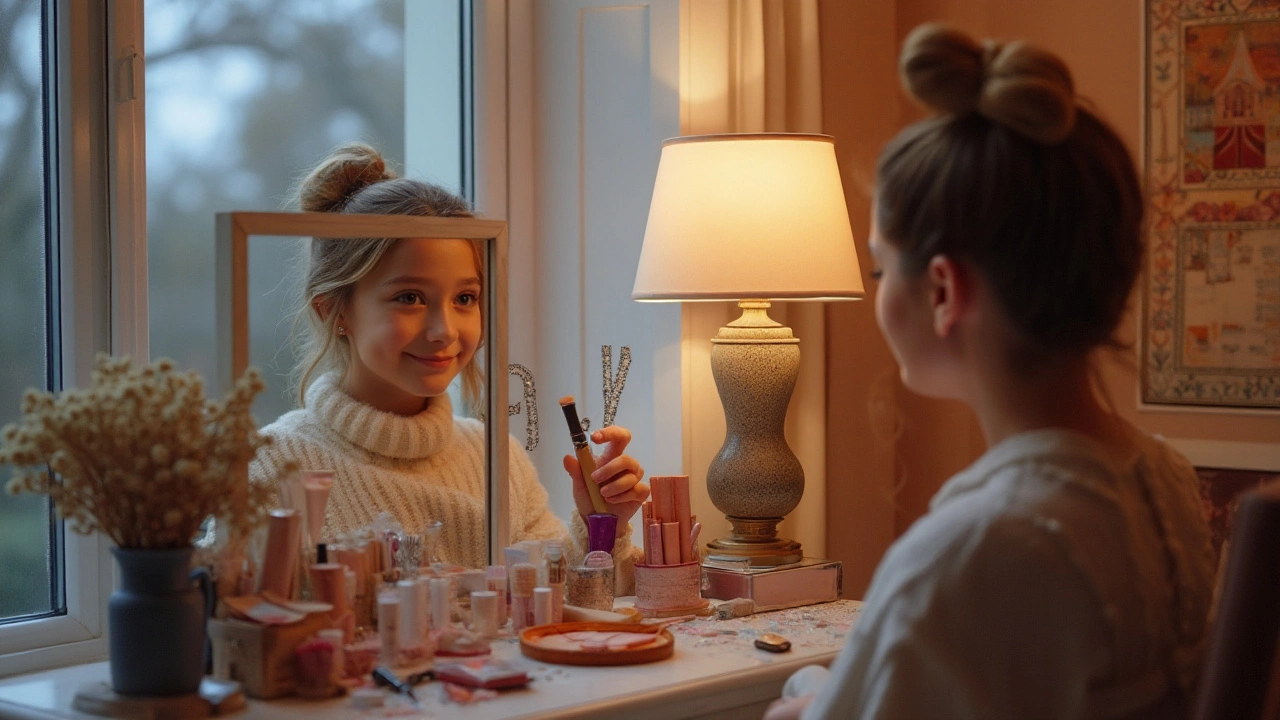
Identifying Certified Cruelty-Free Makeup
Recognizing cruelty-free makeup can sometimes feel like navigating a maze of logos, certifications, and claims. The term 'cruelty-free' implies that no animal was harmed during the testing of the product or its ingredients. However, understanding which products truly qualify requires a keen eye and a bit of knowledge. The most reassuring way to ensure that a product is truly cruelty-free is by looking for trustworthy certification logos. Organizations like Leaping Bunny and PETA have been at the forefront of accrediting brands that meet strict no-animal-testing standards. Products that carry the Leaping Bunny logo, for example, are guaranteed to have been independently verified through stringent checks across the supply chain, which involves rigorous audits to ensure transparency.
It's important to scrutinize labels carefully, as some brands might use wording that gives the illusion of being cruelty-free when they are not fully compliant. Phrases like 'not tested on animals' can be misleading, especially if the individual ingredients were subjected to animal testing by suppliers. To spot fully cruelty-free brands, looking for recognized certifications is crucial. Being familiar with reputable logos like the one from Choose Cruelty Free or the Vegan Society can help. By aligning your purchases with ethical cosmetics certifications, you empower cruelty-free practices that bring us closer to an animal-friendly beauty industry. The commitment of these brands is not just a marketing strategy; it's an ethical standard they uphold, ensuring that beauty doesn't come at the expense of animal welfare.
"People often think that a brand can self-declare, but trusted certifications are what hold them accountable," says a representative from Cruelty-Free International, an organization dedicated to ending animal testing worldwide.
The digital age has gifted consumers with powerful tools to verify claims. Apps like Bunny Free enable users to scan product barcodes to verify their status instantly. These resources make it easier for consumers to make informed decisions on the go and help in transitioning towards an ethical lifestyle. Identifying certified cruelty-free makeup isn't just about looking for logos, it involves cultivating awareness and understanding how to leverage technology and resources effectively. Also noteworthy is that many cruelty-free brands go a step further by embracing sustainable practices, using eco-friendly packaging, and ensuring their suppliers adhere to humane working conditions. Such brands ensure that the ethical journey goes far beyond the production of the final product.
The beauty industry, motivated by a more conscious consumer base, is evolving rapidly. Statistically, there's a noticeable surge in the demand for cruelty-free beauty products. According to a recent survey, approximately 36% of consumers now seek products that are both cruelty-free and vegan. This shifting trend influences brands to pivot towards more ethical practices. Becoming adept at identifying truly cruelty-free products is a way to align one's personal values with market behavior, creating a ripple effect that encourages change within the industry. To deepen our impact as consumers, supporting these beauty products is as much a personal choice as it is part of a collective push towards a world devoid of unnecessary animal testing.
Popular Cruelty-Free Brands to Explore
Embarking on the journey of cruelty-free beauty involves discovering brands that have embraced compassionate and ethical practices. Among these, some brands have made a significant mark, assuring consumers that beauty doesn't have to come at the price of animal welfare. One such brand is Lush Cosmetics, renowned not just for its vibrant bath bombs and skincare, but also for its staunch advocacy against animal testing. Since its inception, Lush has been a vocal proponent of cruelty-free practices, going to great lengths to ensure their products are friendly to both consumers and the environment.
Another brand that deserves a spotlight is e.l.f. Cosmetics. With a mission to provide high-quality beauty products without the cruelty, e.l.f. has successfully merged affordability with ethics. They offer an extensive range of makeup products, from foundations to vibrant eyeshadow palettes, all proudly carrying the cruelty-free badge. Their transparency and commitment to ethical practices have resonated with many who seek to make informed choices in their beauty routine.
"When it comes to responsible beauty, consumers are increasingly making choices that align with their ethical beliefs," suggests a study by the Humane Society International, highlighting the shift in consumer behavior towards cruelty-free products globally.Reputable brands like Urban Decay have also adopted cruelty-free policies, providing makeup enthusiasts with bold and durable cosmetics while ensuring their production process remains free of animal testing. The brand is not only celebrated for its dynamic product range but also for fostering an informed community of consumers who value ethical beauty.
The Newcomers and Pioneers
Rising stars in the industry, like Milk Makeup, are rapidly gaining traction thanks to their innovative yet ethical approach to beauty. Milk Makeup champions clean and cruelty-free beauty, fueled by a mission to deliver versatile products that suit every lifestyle. From their multifaceted stick products to their nourishing skincare line, Milk Makeup invites users to express themselves boldly, knowing they are supporting a cruelty-free vision. Additionally, longstanding pioneers like The Body Shop have not wavered from their cruelty-free commitment since their founding days. Their partnership with organizations like Cruelty Free International furthers the cause and sets an example for others in the industry.
For those exploring the world of cruelty-free beauty, it's crucial to recognize that these brands are more than just producers of makeup and skincare; they are torchbearers of ethical responsibility. Each of these companies contributes to a collective effort to eradicate animal testing in the cosmetics industry. While consumers might initially transition due to ethical concerns, they remain loyal due to the high-quality and innovative products these brands continually deliver. As more consumers opt for cruelty-free options, the landscape of the beauty industry continues to transform, proving that ethics and quality can walk hand in hand.
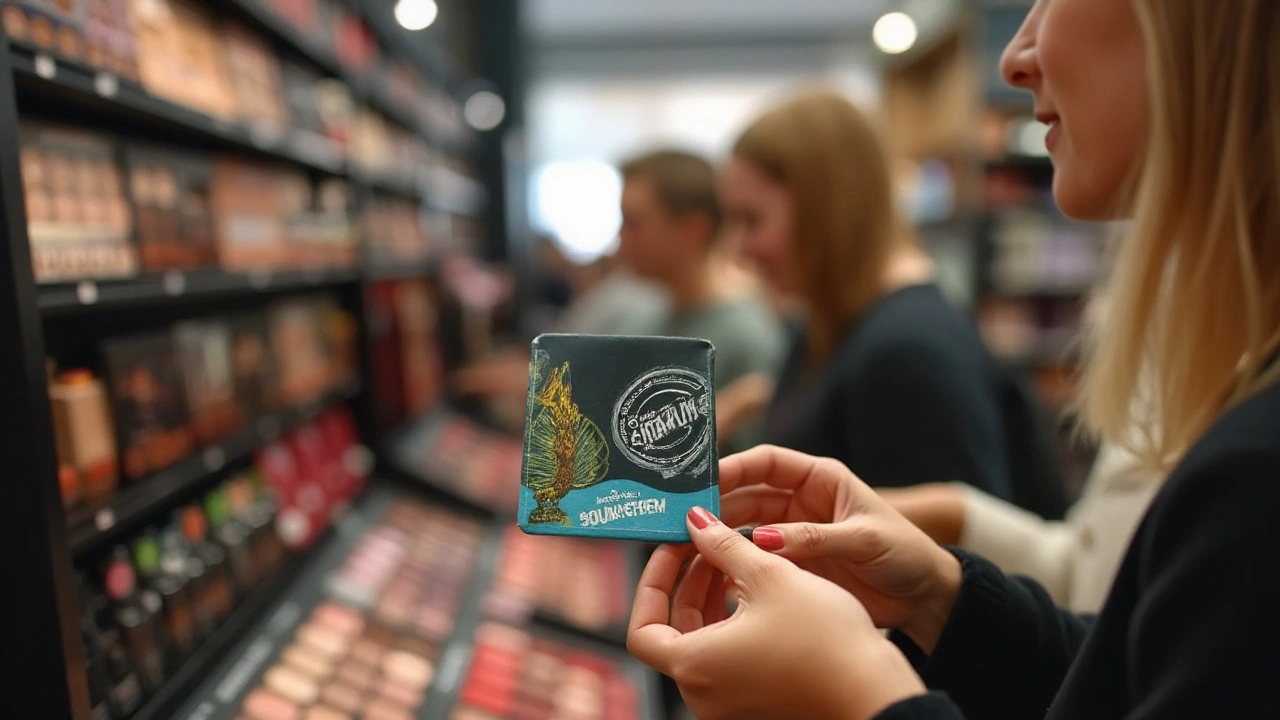
Making the Switch: Tips for a Cruelty-Free Lifestyle
Transitioning to a cruelty-free lifestyle means aligning your daily habits and consumer choices with values that prioritize ethical treatment of animals. It starts with raising awareness about the products we use and the companies we support. To embark on this journey, begin by educating yourself on the significance of cruelty-free practices and look for alternatives to products that do not align with these values. Research is your friend here, and with so many resources available online—from blogs to beauty groups and forums—you can easily find like-minded individuals who have shared their experiences and recommendations. It's about responsibility as much as it is about discovering new brands and products that you can trust and feel proud to use every day.
When choosing products, strive to familiarize yourself with the distinctive logos that signify a cruelty-free product. Some of the most recognizable certification symbols include those from organizations like Leaping Bunny and PETA's cruelty-free program. These certifications are evidence that a company maintains ethical standards, and knowing them can help you make quick, informed decisions during shopping trips. Collaborating with these organizations, many companies voluntarily submit to audits, ensuring transparency and authenticity in their cruelty-free claims. Don’t hesitate to reach out directly to companies with questions about their policies if you're uncertain, since transparency is often key. Knowing what to look for is an essential part of making the switch seamless.
The next vital step involves exploring the wide range of cruelty-free makeup and beauty brands. From your local drugstore to high-end shopping outlets, there are numerous options catering to different preferences and budgets. Brands like e.l.f. Cosmetics, Fenty Beauty, and Lush are renowned for their commitment to animal welfare and cruelty-free production. Testing out products through samples or smaller quantities can be a great way to explore new brands without making an extensive commitment. Remember, converting your beauty collection doesn’t happen overnight—it's a gradual process, and every small step counts. This approach not only introduces you to a world of compassionate beauty choices but offers potential discoveries of new favorites! In making this shift, patience and a willingness to experiment with different brands and products truly pay off in the end.
Your switch to a cruelty-free lifestyle need not stop at makeup. Consider extending these principles to other aspects of your life, like household cleaning supplies or clothing choices, for a more comprehensive approach to ethical living. Seek alternatives that share your values, reducing overall intake of goods tested on animals, not just in cosmetics but in all sectors. As you minimize the use of products linked to unethical practices, you might find it enriching to document your journey—sharing the transition on social media or blogs can also inspire others to make a similar switch. Developing an ongoing commitment to learning about and participating in cruelty-free initiatives anchors your lifestyle in these ethics deeply and meaningfully. Such actions support global efforts toward humane and sustainable practices, unprecedentedly contributing to the growing demand for ethical cosmetics.
To conclude, adopting a cruelty-free lifestyle is remarkably personal and empowering, one filled with reflection and discovery as you make conscientious choices. As British author Anita Roddick once said, "If you think you are too small to make an impact, try going to bed with a mosquito." It serves as a reminder that our choices, no matter how small, contribute vastly to collective change. Embrace this challenge, and enjoy the positives of choosing sustainability and compassion; the benefits often ripple far beyond your makeup bag.
